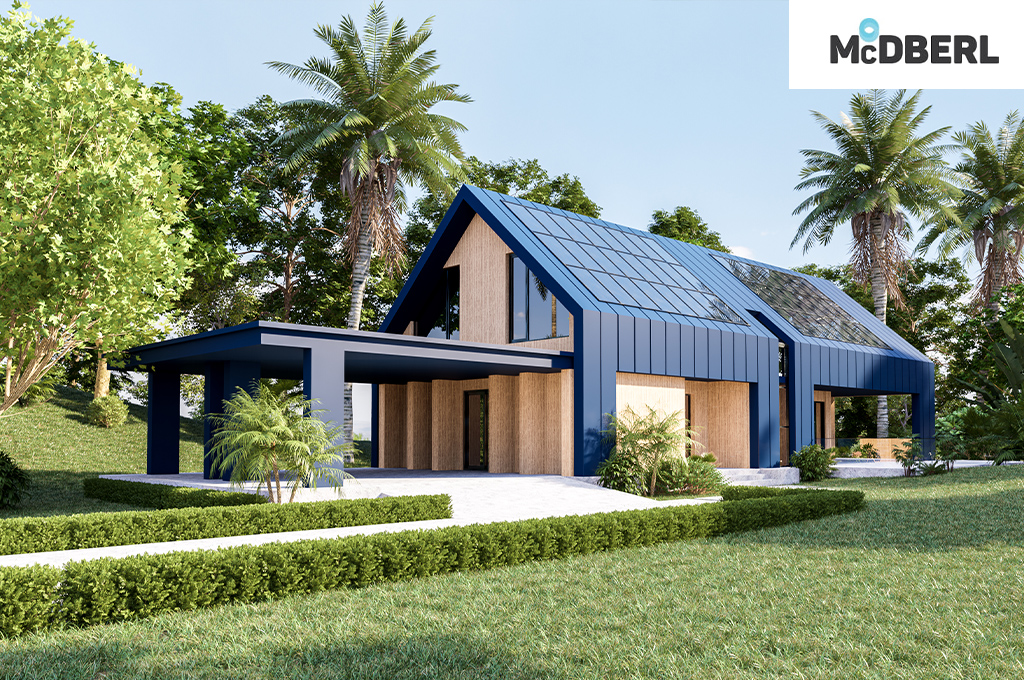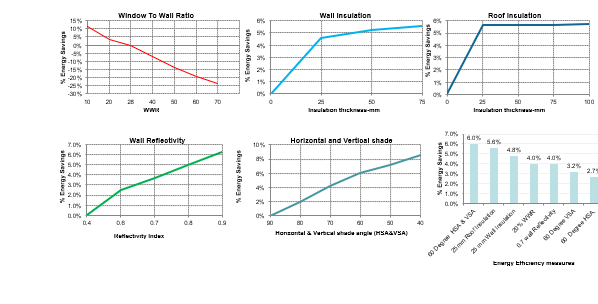
Passive design strategies are at base of active energy savings
With global warming becoming a reality, drastic changes are occurring in temperatures globally. With 90% of modern lifestyle being spent indoors, buildings need to be climate-controlled and energy efficient, without the use of conventional energy sources (electricity) that cause carbon emissions. Passive design is an emerging approach to implement this. So, what is it exactly? Passive Design includes leveraging the basic design, the shape & the form of the building itself, in making that building energy efficient, habitable, and comfortable. Passive design strategies help to maintain thermal comfort in a building without using electricity for heating and cooling, even in the most extreme climate conditions.
How does Passive Design help?
- The passive design approaches take advantage of physical energy possibilities as they correlate to the location of the building, the climate of the area and characteristics of building material.
- Improving a building’s energy efficiency is the prime aspect of passive design.
- Passive design strategies are the best option to diminish the size of the cooling system by holding the cooled air in the structure.
- Generally, passive design strategies impact the front-end cost of the project. You can support diminishing the cost of active design approaches by degrading heating and cooling quantities.

The following are some of the best passive design strategies.
Building orientation
Form and orientation constitute two of the most important passive design strategies for reducing energy consumption and improving thermal comfort for occupants of a building.
- It affects the amount of sun falling on surfaces, daylighting, and direction of winds.
- Properly oriented building maximizes the amount of solar radiation in winter and minimizes the amount in summers.
- In predominantly hot regions, buildings should be ideally oriented to minimize solar gains, the reverse is applicable for cold regions.
Shading
‘External shading devices’ are controls that greatly reduce the need for mechanical cooling to maintain thermal comfort inside buildings, by controlling heat gain through openings.
- Longer sides of a building should be oriented North- South which is preferred to minimize overall solar gain through the envelope.
- South-facing windows are the easiest to shade. Overhangs on south-oriented windows provide effective shading by blocking summer sun and admitting winter sun.
- Use fixed horizontal overhangs on south-facing glass.
- To the greatest extent possible, limit the amount of east and west glass (minimize window area) since they are harder to shade.
- To enhance natural light utilization, passive design strategies such as light shelves are very useful for deeper and uniform distribution of light
Insulation
- Thermal insulation in walls and roofs reduces heat transfer between the inside and outside and helps maintain comfortable indoor temperature.
- It provides healthier environment, adds sound control, and most important lowers the electricity bills. Insulation helps keep indoor space cooler in summer months and warm during winters.
Daylight
Daylight is the most important factor in making the building energy efficient. The location of the windows in a hot climate is extremely important for receiving proper light without consuming electricity.
- Buildings that are longer on their east-west axis are better for daylighting and visual comfort.
- Large buildings can get daylight into more spaces by having central courtyards or atria or having other cut-outs in the building form.
- Mmaximize southern exposure and optimize northern exposure.
Ventilation
Fresh air in a building brings health benefits and increased comfort level to its occupants. Fresh air provision is considered as an efficient and a healthy solution as it reduces the need for mechanical means to ventilate a building.
- For good natural ventilation, building openings should be in opposite pressure zone.
- The building can be oriented 0° to 30° with respect to the prevailing wind direction / most preferably orientating longer facades of the building towards predominant wind direction
- Windows should be staggered rather than aligned
Passive Cooling Measures:
Wind Tower
- The hot ambient air enters the tower through its openings.
- It is cooled when it comes in contact with the water mist inside the tower and thus becomes heavier and sinks down.
- An inlet is provided to the rooms with an outlet on the other side, so that there is a draft of cool air.
Solar Chimney
- A solar chimney is a modern device that induces natural ventilation by the thermal-buoyancy effect. The structure of the chimney absorbs solar energy during the day, thereby heating the enclosed air within and causing it to rise.
- Thus, air is drawn from the building into an open near the bottom of the chimney.
- The air exhausted through the chimney, is replaced by ambient air.
Construction material
The embodied energy (carbon) of a building material can be taken as the total primary energy consumed (carbon released over its life cycle). This would normally include (at least) extraction, manufacturing and transportation.
Materials used in the conventional building construction constitutes lot of embodied energy into the atmosphere. And also, these materials conduct more heat into the building and increases the cooling energy demand.
Conclusion
The passive design strategies balance the energy and performance of the building by reducing heating and cooling mechanically. By balancing passive design parameters like proper solar orientation, optimal insulation, high-performance windows and doors, an airtight enclosure, and balanced ventilation, Passive certified homes end up using 40- 80% less energy for heating and cooling than conventional buildings and are proven to be significantly healthier and more comfortable than traditionally built homes.




